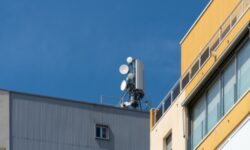A PSA on Public Emergency Alarm Systems
Public emergency alarm reporting systems consist of alarm boxes and alarm processing equipment that communicate on a wired or wireless network(s).

This month we’re going to explore a chapter within NFPA 72, “National Fire Alarm and Signaling Code,” that is not used by the majority of fire alarm installers. This would be Chapter 27, Public Emergency Alarm Reporting Systems.
It’s good to learn about these systems, even if purely for educational purposes by having a career in this industry. These systems are now found primarily in New England. In the past they were found all over the United States and quite a few collectors of fire alarm artifacts have a master box.
Even at the firm that I work for, there is a master box in our lobby area. There are still a few that are in operation in San Francisco and they can be found on U.S. Navy facilities. However, for the most part they have faded into the sunset. For those who have taken the NICET exams, there are always a number of questions from Chapter 27. For most, this may be your only exposure to this chapter.
Systems Must Stand Up to Tough Conditions
These systems can be both wired and wireless. The newer systems that are being installed are wireless, but if you travel to a number of towns up and down the six New England states you can still find the conductors for the wired systems mounted to telephone poles as the circuit or circuits travel from the boxes to the reporting center.
For the wired systems, Chapter 27 also allows the use of fiber optics. The general requirements for wired systems can be found in Section 27.4.2 and Section 27.7. Within Section 27.7 there are requirements for: Circuit conductors and fiber-optic strands, cables, underground cables, serial construction, leads down poles and wiring inside buildings.
The wiring inside of the building is to the control panel. This section covers the installation of the system from the protected premises back to the receiving station. This is different than with systems that communicate through the methods that are outlined within Chapter 26, Supervising Station Alarm Systems.
The largest concern is the physical protection of the circuits as they travel across a village, town or city. Within a protected premises the conductors are to be covered by one of the following: Electrical metallic tubing, intermediate metal tubing, rigid metal conduit and rigid nonmetallic conduit if allowed by the AHJ.
Precautions shall be provided where passing through tress, under bridges, over railroads and all other places subject to physical damage. Where the circuits are located within manholes, they shall be racked and marked for identification. Where the circuits are traveling down a pole, they shall be protected from physical damage.
Furthermore, note that within Chapter 27 verbiage accounts for the ruggedness of such systems (which makes even more sense for often harsh New England weather): “All devices shall be designed to function satisfactorily under the climatic and environmental conditions to which they could be exposed.”
Understanding Type A/B Wireless Differences
Wireless networks are detailed in Section 27.4.3. The capacity of wireless alarm boxes on a single radio frequency shall comply with 27.4.3.5. The wireless network capacity for the number of alarm boxes permitted on a single radio frequency shall comply with one of the following:
(1) For networks that use one-way transmission in which the individual alarm box automatically initiates the required message using circuitry integral to the alarm box, not more than 500 alarm boxes are permitted on a single radio frequency.
(2) For networks that use a two-way concept in which interrogation signals are transmitted to the individual alarm boxes from the communications center on the same radio frequency used for receipt of alarms, not more than 250 alarm boxes are permitted on a single radio frequency.
(3) For networks that use a two-way concept where interrogation signals are transmitted on a radio frequency that differs from that used for receipt of alarms, not more than 500 alarm boxes are permitted on a single radio frequency.
For a Type A systems, which would transmit more than 2,500 alarm signals per year, the following requirements apply:
- There shall be two separate receiving networks
- Both receiving networks shall be installed at the communications center
- The failure of one network will not interfere with the other
For Type B systems, the following requirements are to be met:
- There shall be a complete receiving network for each frequency that is used
- Where alarm signals are retransmitted from the communications center to an emergency response facility, a second frequency shall be used
For those who work within the areas of the United States that use these systems, you are familiar with these requirements. If you are moving or expanding into these areas, you’ll need to take it upon yourself to become knowledgeable with all of Chapter 27.
If you enjoyed this article and want to receive more valuable industry content like this, click here to sign up for our FREE digital newsletters!

Security Is Our Business, Too
For professionals who recommend, buy and install all types of electronic security equipment, a free subscription to Commercial Integrator + Security Sales & Integration is like having a consultant on call. You’ll find an ideal balance of technology and business coverage, with installation tips and techniques for products and updates on how to add to your bottom line.
A FREE subscription to the top resource for security and integration industry will prove to be invaluable.








